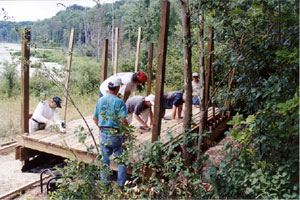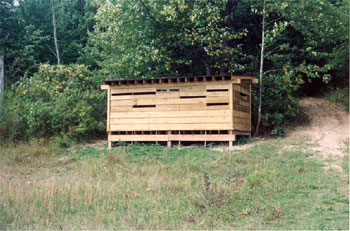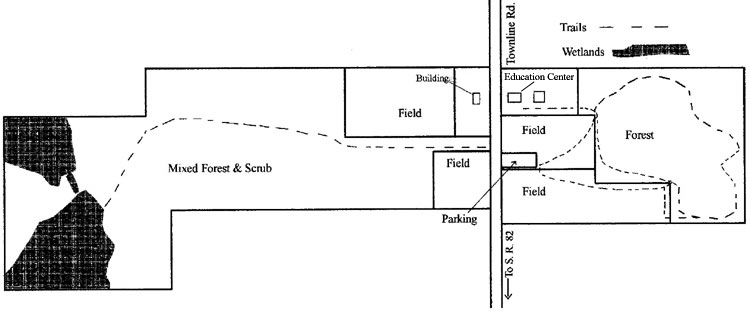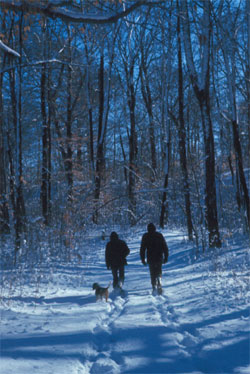
![]()
Sanctuaries
The Audubon Society of Greater Cleveland has responsibility for four nature preserves in the watershed of the Chagrin River. Three sanctuaries are in the City of Aurora:
The fourth sanctuary is in Willoughby (Lake County):
|
Blanche Katherine Novak Wildlife
Sanctuary and State Nature Preserve
382 Town Line Road, Aurora, Ohio
Winter Walk at Novak Sanctuary |
The Blanche Kathryn Novak Sanctuary – pictured above in the summer and to the left in winter– is located east of Aurora, about 3/4 mile north of the intersection of Townline Rd and Ohio Rt. 82 (download PDF: Aurora location map). As shown in the map below, the sanctuary lies both to the west of Townline Rd in Aurora City limits and east of it in Mantua Township. There is a very fine Category 3 wooded wetland on the Aurora side and fields and secondary woods on the Mantua side. This wetland has the highest species diversity of five natural wetlands of Northern Ohio studied by the Ohio EPA. The wetland is approximately 5/8 miles from the parking lot on Townline Rd and is reached by a dirt road. Trails in the woods are marked on the Mantua side as well. The sanctuary is a rich habitat for nesting birds with at least 56 species on the wetland side and 41 species on the Mantua side. The area has been part of the spring bird walks of the Audubon Society of Greater Cleveland since 1993, and the migratory birds seen are part of that census. An observation blind in the wetlands area was completed in 2002, further enhancing their educational potential. The Novak Sanctuary was dedicated in 1999 as a State Nature Preserve (more information) by the Division of Natural Areas and Preserves of the Ohio Department of Natural; Resources. Biological Assets: The wetland is protected by both the U.S. Corps of Engineers and the Ohio Division of Natural Areas. In 1997, Ohio EPA published a report that compared natural wetlands with wetlands created by mitigation projects. One of the 5 wetlands chosen for this study was the Novak wetland. (Fennessy. S. A Functional Assessment of Mitigation Wetlands in Ohio: Comparisons with Natural Systems. Ohio EPA report to the Federal EPA. Of the wetlands studied, the Novak had the highest species diversity. Because of the nature of this wetland and the interest in it by the U.S. Corps of Engineers, the Society was able to get an in lieu agreement with the Corps to buy conservation easements with money given by developers of areas with small low grade wetlands. Using these funds, we have been able to obtain one conservation easement and have ongoing negotiations for another. |
|
The vegetation of the wetland has very few invading species such as phragmites which has ruined many Northern Ohio wetlands (e.g. Mentor Marsh). |


Wildlife Observation Blind at the Novak Sanctuary Completed during the Summer of 2002

Pond Sentry at Cleveland Audubon's Novak Sanctuary

The Audubon Society of Greater Cleveland (ASGC) promotes the conservation and appreciation of birds and other wildlife through habitat preservation and educational activities. It is a chapter of the National Audubon Society and is one of northeast Ohio’s oldest continuously operating environmental organizations; founded in 1928. ASGC now has over 1,200 members throughout NE Ohio and owns over 500 acres of land protected as both Audubon Sanctuaries and Ohio State Nature Preserves. It restored and renovated a building located in the Audubon Blanche Katherine Novak Sanctuary as a regional Audubon Education Center.
